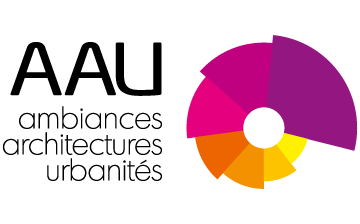La perception embarquée ; Analyse sensible de voyages urbains.
Embarked perception.
Analyzing the City through Urban Journeys.
MASSON Damien - Thèse de doctorat soutenue en 2009
Encadrement : J.P. Thibaud
FR
Cette recherche pose la question du lien entre expérience du mouvement et compréhension sensible de l’espace urbain. Située dans le champ des ambiances architecturales et urbaines, et placée dans le sillon épistémologique et théorique des travaux de sociologie des mobilités issus de l’Université de Lancaster, cette recherche part de l’hypothèse suivante : la compréhension de la perception en mouvement de l’espace urbain est un moyen de relier les échelles disparates du sensible – corporel et contextualisé – et de l’espace à une grande échelle.
Des paroles de voyageurs ont été recueillies dans le métro de Paris et à bord d’un train à Lyon, à l’aide d’une adaptation de la méthode des parcours commentés ; des enregistrements sonores ont également été réalisés à bord de transports collectifs ferroviaires (métro, tramway, train) dans cinq villes du monde. De ce corpus empirique émerge une analyse de l’expérience sensible des transports organisée autour de différents registres à l’interface des sensibilités, du moyen de transport et de l’espace traversé.
Deux résultats principaux résultent de cette démarche. Premièrement, le développement d’une métholodologie spécifique, capable de rendre compte à la fois de la perception en transports motorisés ainsi que de l’espace urbain à l’épreuve du mouvement. Secondement, des modalités d’analyse originales permettant la construction théorique compréhensive de l’espace urbain « inter-échelles ». L’objectif final de cette mise en confrontation consiste à avancer théoriquement sur la notion d’ambiance à une échelle urbaine.
EN
The purpose of this work is to develop ways in which an understanding of the perception of the urban area as experienced by users of motorized transportation is relevant for analysing the
city. Working in the field of ‘architectural and urban ambiances’ which crosses disciplinary boundaries to simultaneously encompass perceptible, social and built space, and situated theoretically and epistemologically within the mobilities paradigm as it is developed at the University of Lancaster, I explore daily transportation issues to propose the following hypothesis: understanding the city through its dwellers in-motion-experience is a way to link the heterogeneous “scales” of corporality to urban space.
The words of passengers were collected in Paris’ subway and in a train inside the city of Lyon. I also made audiotapes inside different railway public transportation systems (tramway, metro, train) in five cities around the world. Based on these inquiries, repertoires were compiled to describe and understand the shared perception of urban spaces by passengers through their daily experience of movement.
From this point, two main results, emerge. Methodologically, issues of understanding passengers’ perception of the city lead me to form specific modes of enquiry. Secondly, seen from a theoretical point of view, there arises the possibility of a new, comprehensive way of
linking sensitive analysis to thought at the urban scale. The main goal arising of this confrontation consists on linking in situ experience and big-scale urban space, and suggesting a way to understand theoretically the notion of atmosphere at an urban scale.
Keewords : urban atmosphere, urban mobilities, rhythm, perception.
